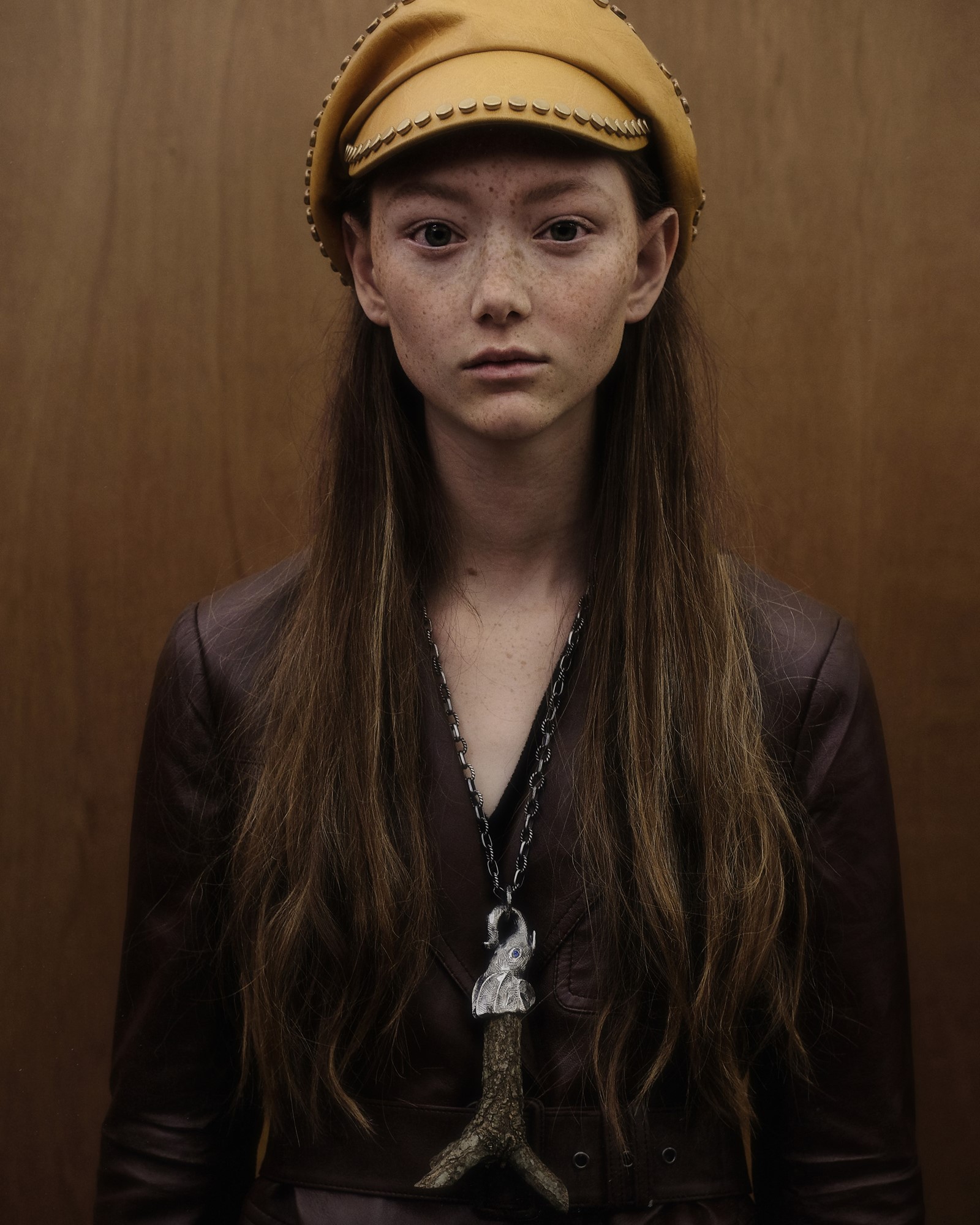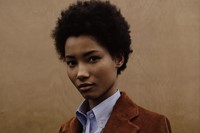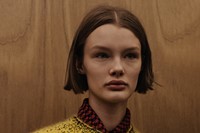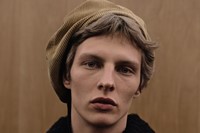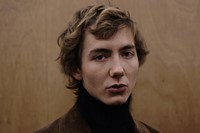One of the stories often told about Mrs Prada is that, while a student in the 1970s, she was a card-carrying member of the Italian Communist party; rumour has it she would wear Yves Saint Laurent to distribute flyers on marches (she has, on occasion, explained that she found the dress codes prescribed for such proclivities to be tiresome). It is certainly true that Prada earned her degree in political science from the University of Milan during a time in which Italy was defined by student protest and political upheaval, but she is generally reluctant to discuss that period – after all, as she once told Alexander Fury in Document Journal, “Every young kid who was vaguely clever was leftist, so it’s not that I was so special”. Nonetheless, for her A/W17 menswear and womenswear pre-collection, that era’s aesthetic played a clear role in the designs she sent onto the runway: a combination of bookish 70s beatniks and the Red Brigades presented with somewhat sinister undertones. “I didn’t want to do the 70s… but it came out naturally,” she said backstage. “It was an important moment for protest, for humanity. Now, protest is very necessary.”
She’s right, of course – the week following her collection’s debut will see the inauguration of Donald Trump, and then the Women’s March on Washington, an event predicted to be one of America’s largest ever demonstrations. But here, size was not the solution to our current turmoil; instead she explained that “the main sentiment that I have is going from bigness to small” – it was a collection rooted in the unsettled normalcy that Prada revels in. Plus, it would be naïve to assume that Mrs Prada would design a collection simply to politicise her audience – “To be an opinionist as a rich fashion designer, I think is the worst possible thing to be,” she told Hans Ulrich Obrist in AnOther Magazine back in A/W08 – and she has never been prone to channelling monolithic inspiration. In fact, as she herself said about the collection, “my inspirations are so many and so complex that to summarise them is impossible.” So here, while there were the corduroy suits and berets typical of 70s students and Katie Morosky, there were also sinister leather trenches and scarves tied like nooses, a showspace comprised of pristine formica panelling and institutional leather-clad beds for the audience to sit upon; it made for a disconcerting scene, rather than a socialist utopia. “The badness was very strong,” she said. “Nasty.” And it was – but, of course, in the best possible way.
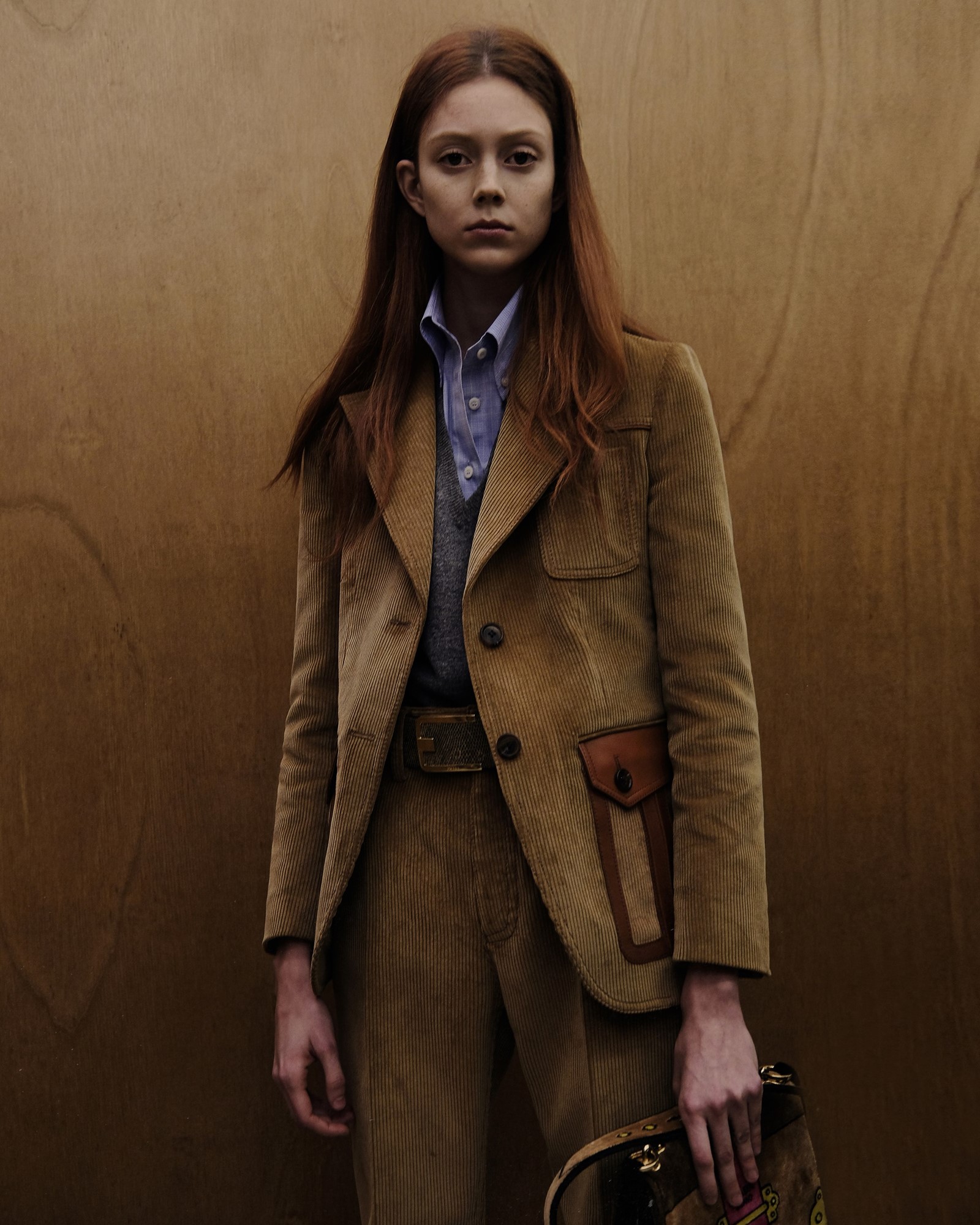
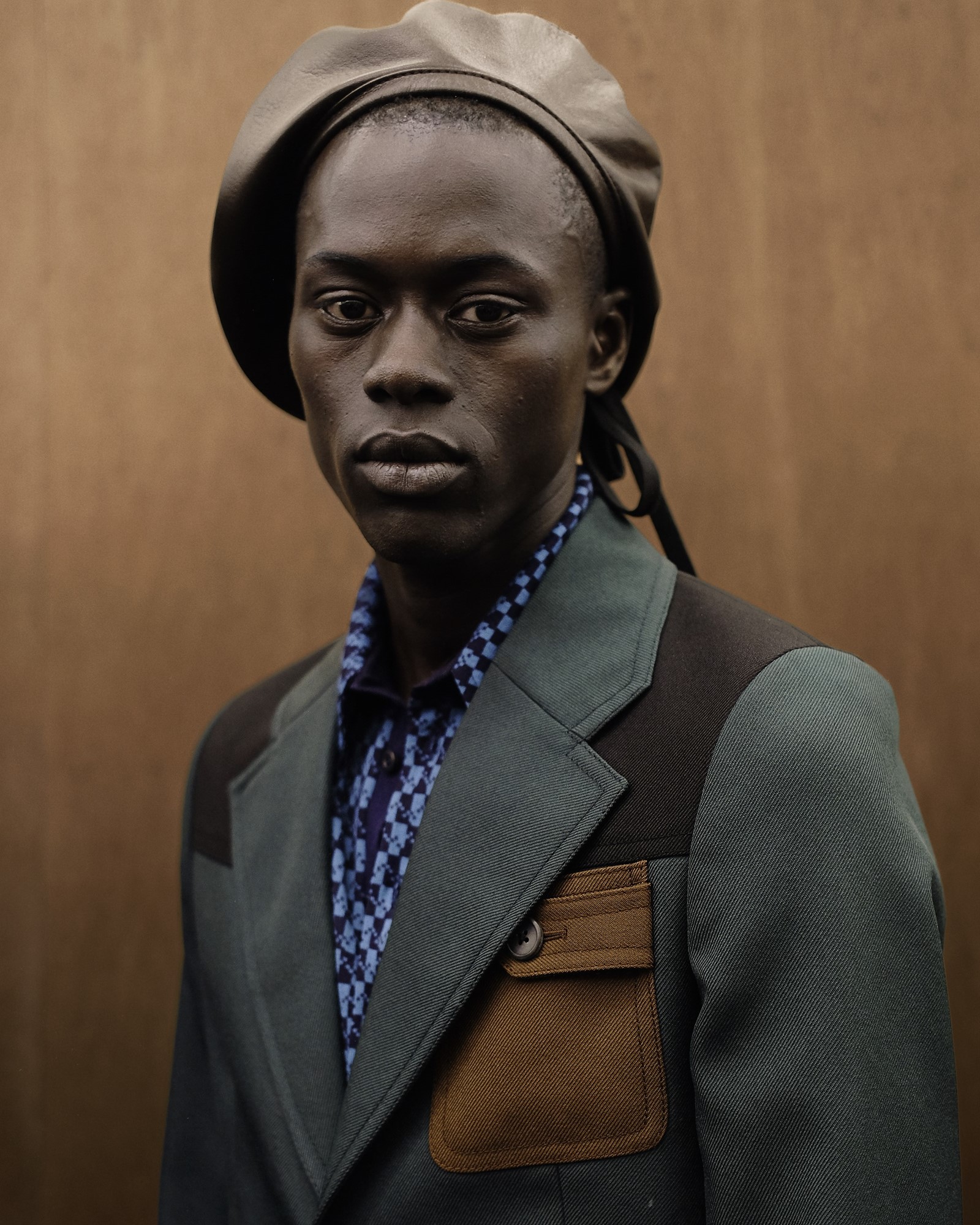
The Cult of Prada
There are few fashion designers who command the same level of cultish fandom that Mrs Prada achieves; so pronounced is her influence that whatever she sends down her runway visibly ripples throughout the industry. Case in point: last season, we saw her models strapped with plastic buckles and backpacks; this season, hiking ephemera has been visible in abundance on everybody else’s runways. For A/W17, in lieu of such overt utilitarianism, there was a return to nature: Mrs Prada proclaimed “a desire for reality, humanity and simplicity”. So, there were fur coats and fluffy moccasins, talismanic pendants and cosy jumpers, which, when positioned against the tense clinking overlaid upon classical music, all felt a little bit Manson Family or Father Yod – strange little sects of supposedly spiritual, liberal ideals that translated into terror. “We were talking about the stories of the 70s… and then came the idea of Wendy Carlos and A Clockwork Orange,” explained Frédéric Sanchez, the composer behind the soundtracks for Prada’s shows. “In the world we live today there is something quite frightening… beautiful, but terrifying.”
“In the world we live today there is something quite frightening… beautiful, but terrifying” Frédéric Sanchez


Hypernormalisation
It would be too easy for Prada’s current sentiment to refer simply to the right-wing bent of contemporary politics. In fact, the liberal left finds itself, presently, in a particularly strange situation, fractured by competing discourses and isolated within digital echo chambers. Six months ago, Prada asked (via Premonitions, the teasing series of short films which the brand debuts via social media ahead of the show itself): “Exploring a landscape of extremities, where do we situate the poles?” “Where to from here, when all of the horizon is in the cloud?” This time, the new series explained that, “The revolution starts at home,” and “Truth is subjective and necessary”. It seemed more of an existential nod towards the abstract and apparently impotent nature of digital-age revolution than a celebration of its virtues; a shoppable interpretation of Adam Curtis-style philosophising. As that director recently explained in documentary Hypernormalisation, “we have become lost in a fake world and cannot see the reality outside,” continuing to explain to DazedDigital that “There’s a whole generation that has retreated from an active engagement with power, who want to change the world”. Here, Mrs Prada seemed to be reminding us of those activists who once determined the personal to be political and sought revolution through action rather than Facebook status; of the importance of authentic, human reality during a time when detachment is bearing particularly frightening consequences.
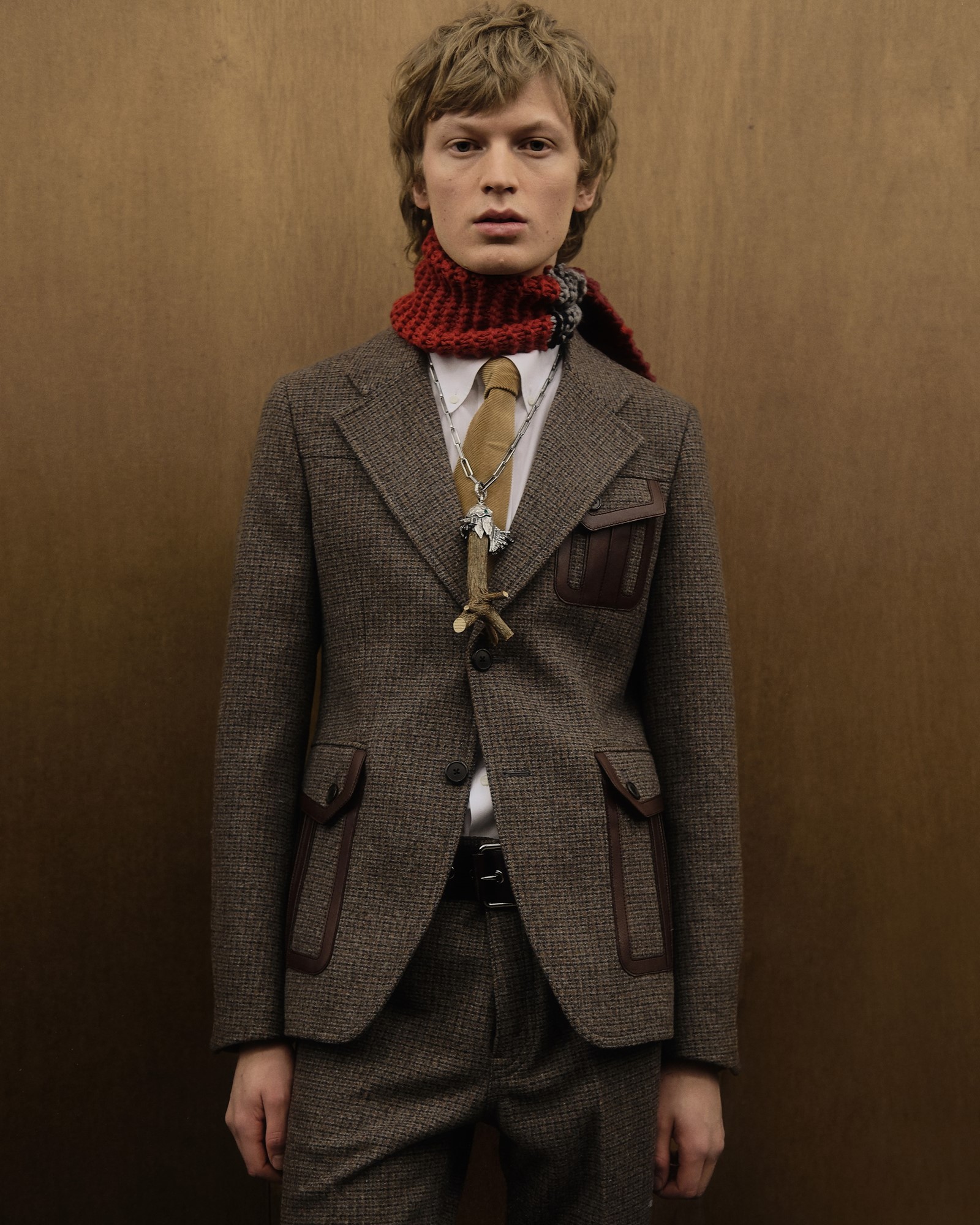
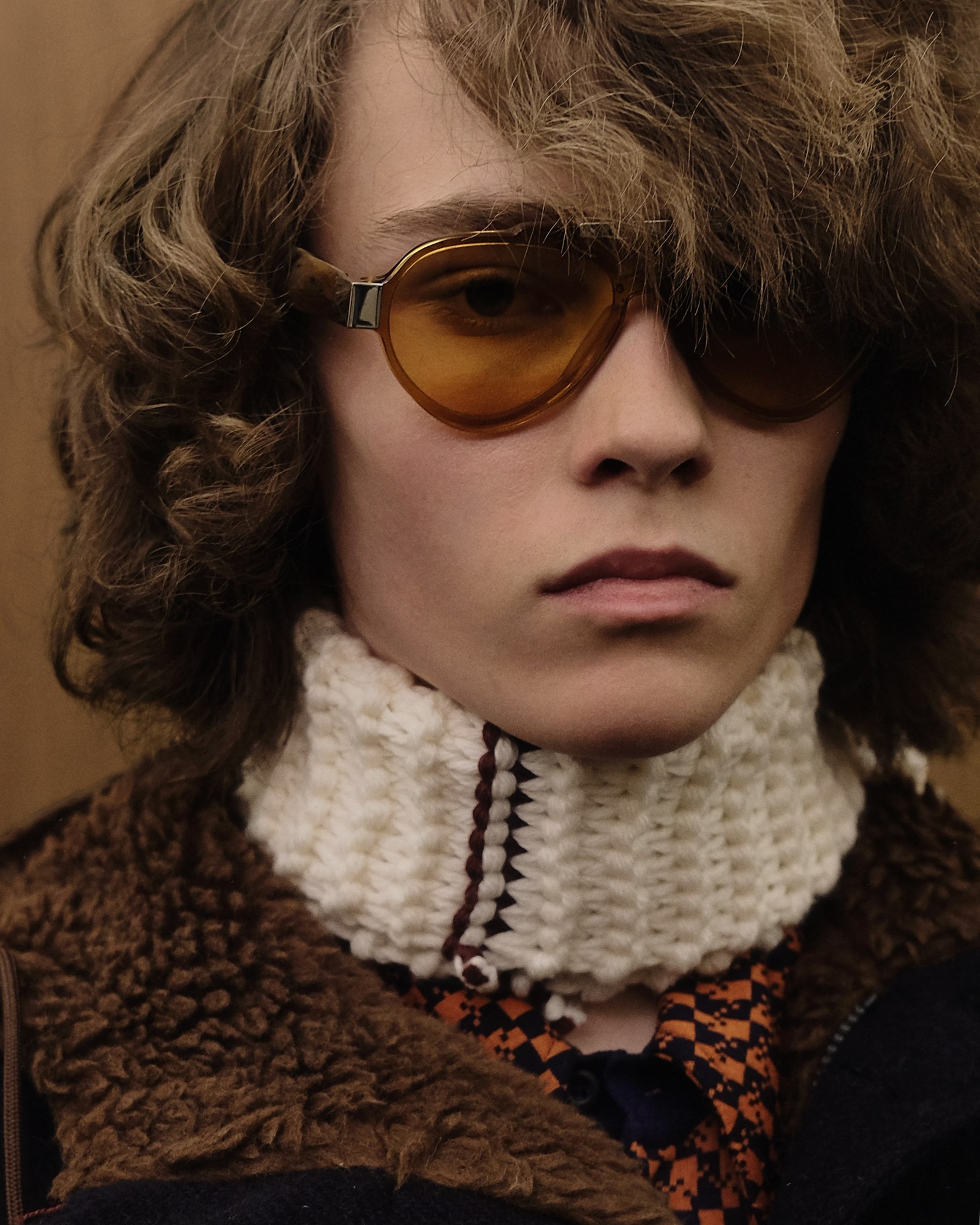
The Evolution of Normcore
Mrs Prada played a particular role in pioneering the wave of normcore that swept through fashion a few years ago; an intensely stylised version of blandness that was provocative in its banality and manifested in Miu Miu anoraks and Prada blazers “too perverse to be innocent”. Now, she explained: “I love the idea of corduroy and leather; basically the whole show is done of those two materials. They give a sense of normality.” It was an extension on a theme she has explored before, but where normcore felt unnerving in its sterility, this felt warmly weird.
There were those cozy knitted jumpers printed with fictionalised artwork that looked like the sort you might find in a hotel lobby – “we wanted the perfect idea of no art,” she grinned, “Sunday painters” – and faux-Cubist handbags that were as covetable as they were supposedly meaningless; naïve necklaces made from shells (that again harked back to that cultish 70s aesthetic) and fluffy socks and mohair cardigans (very hygge). Shearling-lined peacoats and cashmere V-necks were the epitome of the luxury workwear that she does better than anyone else, but skirts came with slits that were cut a little too high; suit trousers accessorised with weird ponyskin belts. “The whole point about the ‘normcore’ trend is that you’re pretending to be normal,” said Curtis. “Cool irony originally had a political analysis that said, ‘We’re detaching from this and looking at it’. Then it just became ‘We’re detached’.” Here, Mrs Prada seemed to be deliberately avoiding such a spirit, instead preaching intimacy as the antidote to the alienation and apathy. “Everybody in this world, we’ve all gone too far,” she explained backstage. “We’re at the point where there’s too much to follow, too much to do. You lose somehow your normal nature.” But, this season, such nature was celebrated in abundance, without detachment or provocative irony. It was a modern-day Love Story – and, perhaps most importantly, it left its audience desperate for autumn.
